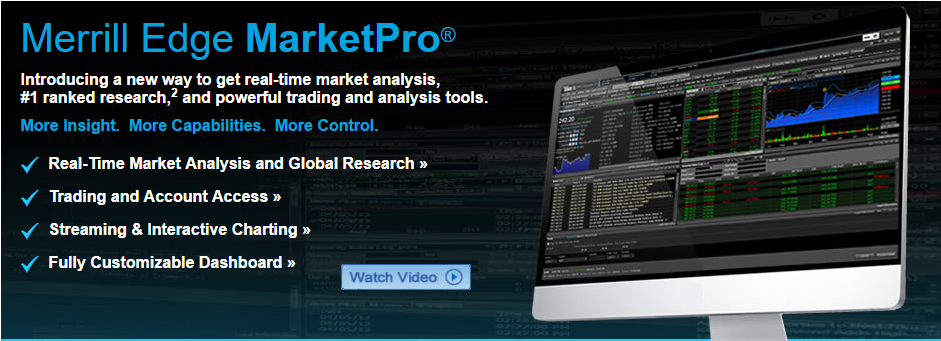Few Americans start saving for retirement early enough, with the average retirement savings for families age 50 to 55 amounting to $124,831, according to a 2017 Bankrate survey. That is far short of what most financial experts say it takes to comfortably enjoy life post-career. Getting a 20 or 30-year-old to take saving seriously can be difficult, however, when retirement remains 40 years away. Until Now.
Recent virtual and augmented reality research has shown that putting someone into a simulated version of themselves 40 years from now can spur a change in attitude toward saving – even if it’s only a projection of their face with a few added wrinkles.
“It’s an eye-opening experience to see what you may look like 40 years in the future,” said Alok Prasad, head of Merrill Edge, which unveiled its Face Retirement mobile application in 2014, in a statement when the app was released. “Stanford University research – and the experience of thousands of Merrill Edge customers – show that people brave enough to look into the crystal ball are much more likely to take control of their retirement planning. It’s a vivid reminder that everything you do today impacts your future.”
Virtual and augmented reality products now permeate daily life, from the recent Pokémon Go fad that saw thousands hiking through parks or visiting obscure coffee shops to “catch ‘em all,” to immersive 360° videos produced by “The New York Times.” Beyond entertainment, virtual reality is finding its way into an industry historically slow to adopt new technologies – financial services. More and more financial firms ranging from industry giant Bank of America – which the Face Retirement tool was created for – to Fidelity, and soon possibly smaller players such as individual financial planners, are investing in virtual reality systems for training purposes, customer engagement, and data analysis.
The Empathy Box
Virtual reality (VR) applications – with some exaggeration – could be described as empathy machines in many contexts. Just like the older faces reflected back at users of Merrill Edge’s platform prompt spenders to consider becoming savers, other virtual experiences can push participants to reevaluate implicit racial biases, deal with chronic pain, and begin overcoming long-held phobias. 
Researchers at University College London, for example, switched virtual reality participants’ bodies to those of different races – swapping white test subjects into black bodies and vice versa. Other experiments have included gauging participants’ reactions to virtual altercations happening in front of them, witnessing ocean acidification in action (as a piece of stationary coral, in this instance), and putting people into the bodies of disabled people. Findings from these projects shows a tendency for people to question pre-held beliefs following the experience and, in the case of race, implicit bias test results declined – meaning white and black participants showed less implicit bias to people of the other race following the experience.
Another project, developed by the United Nations, has taken participants into a Syrian refugee camp, putting them into the role of a young refugee girl as she goes about her day. Again, participants are bombarded with stark sights and sounds they likely never would experience in real-life. The immersive (the video is 360-degrees) program cannot mimic the smell of cooking fires or the gritty feeling of the arid climate, but it does grab users in a way that is beyond a simple photograph or documentary footage.
Empathy for others is one thing, but virtual reality also can be useful in dealing with the problem faced by dozens, if not hundreds, of financial advisors that “Advisors Magazine” has spoken to – clients who lack the self-awareness, motivation, or willpower to tackle their financial situation here and now. The Merrill Edge platform was just one of several tools and experiments conducted in which people faced their future selves in order to change financial habits.
Stanford’s Virtual Human Interaction Lab (VHIL) conducted a series of experiments aimed at determining whether people could be pushed to save more.
“In four studies, participants interacted with realistic computer renderings of their future selves using immersive virtual reality hardware and interactive decision aids,” the study authors wrote in 2011. “In all cases, those who interacted with virtual future selves exhibited an increased tendency to accept later monetary rewards over immediate ones.”
And the “future self” model is finding its way into additional venues.
”We are currently working with local community colleges to embed the “future self” training described above as a part of their financial literacy courses,” Dr. Jeremy Bailenson, the Thomas More Storke Professor of Communication at Stanford and VHIL’s founding director, said by email. “Preliminary data show the future self addition to the curriculum is increasing literacy.”
So, empathy machine, maybe. Teaching tool, definitely. But, what about the rest of the financial services industry? Where else is virtual reality making its presence known?
Virtual Trading, Real Money
A broker notices an unusual spike of activity related to a specific stock. Trying to understand why, he dons a virtual reality headset and pulls up a three-dimensional display of the market and trading activity that morning. In a sidebar in his peripheral vision, market news headlines scroll past that he can stop and read as needed. The 3-D display allows the trader to zero in on why the stock is rising, and he calls the client to recommend a trade.
Science fiction? Not really. Actually, it’s a product demo reel from Citi. The workstation – using the Microsoft HoloLens headset – combines traditional 2-D displays with 3-D virtual reality to provide financial professionals with a more intuitive way to grapple with fast-moving market changes.
Traders won’t be wearing bulky headsets throughout the workday, however. Stanford’s VHIL, it should be noted, caps VR use at 20 minutes and then requires participants to remove their headset and rest for at least a few minutes. And the “20-minute rule” may not be a problem for workers who rely on VR for data analysis because of how the tools will be used.
“There is a robust literature that shows VR can help people visualize complex patterns, one that can't be seen on a two-axis graph. However, not all patterns require a third axis to understand,” Stanford’s Bailenson said. “So, I suspect systems will evolve where for most professionals will use a normal computer for their daily routine, but when particularly complex patterns emerge they will then resort to the VR simulations. In this sense, the 20 minute rule can stay in effect, as one would only be using VR sporadically.”
The New Medium
As Bailenson wrote in his recent book “Experience On Demand,” virtual reality is a new medium. Just as television allowed people to view visuals combined with sound, and the Internet merged text, sight, sound, and interactivity, virtual reality adds yet another dimension to media. It will take time for the use-cases of virtual reality to become fully apparent, and for consumers to surprise product-designers with unforeseen uses.
Financial services professionals who take advantage of this new tool as it makes its presence known in the consumer market will benefit not only from the enhanced ability to process data and make accurate decisions, but from the additional opportunities the technology presents to educate clients. And, for many advisors, the technology may even present the answer to the ever-present question of how to get clients to take their own financial futures seriously.






